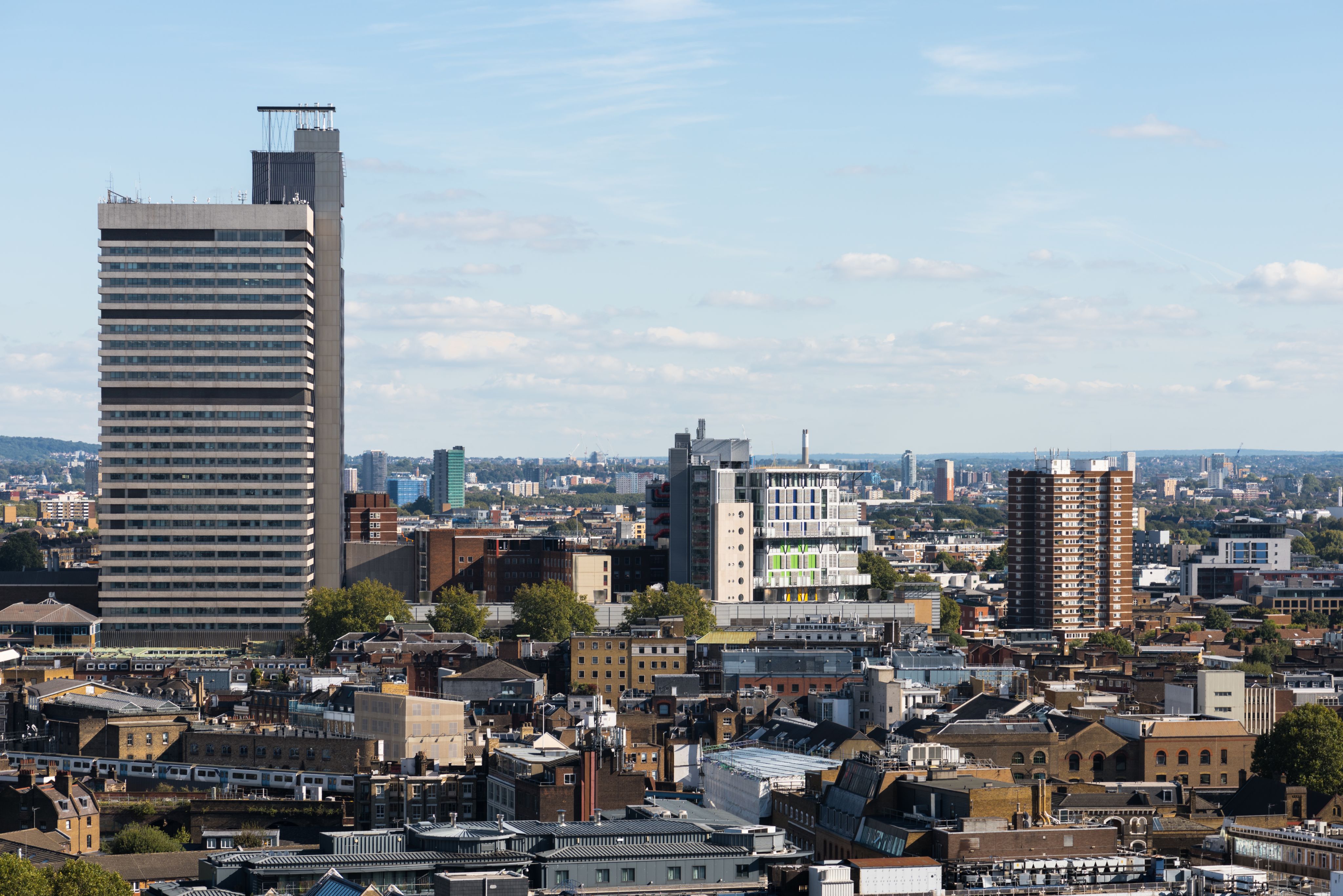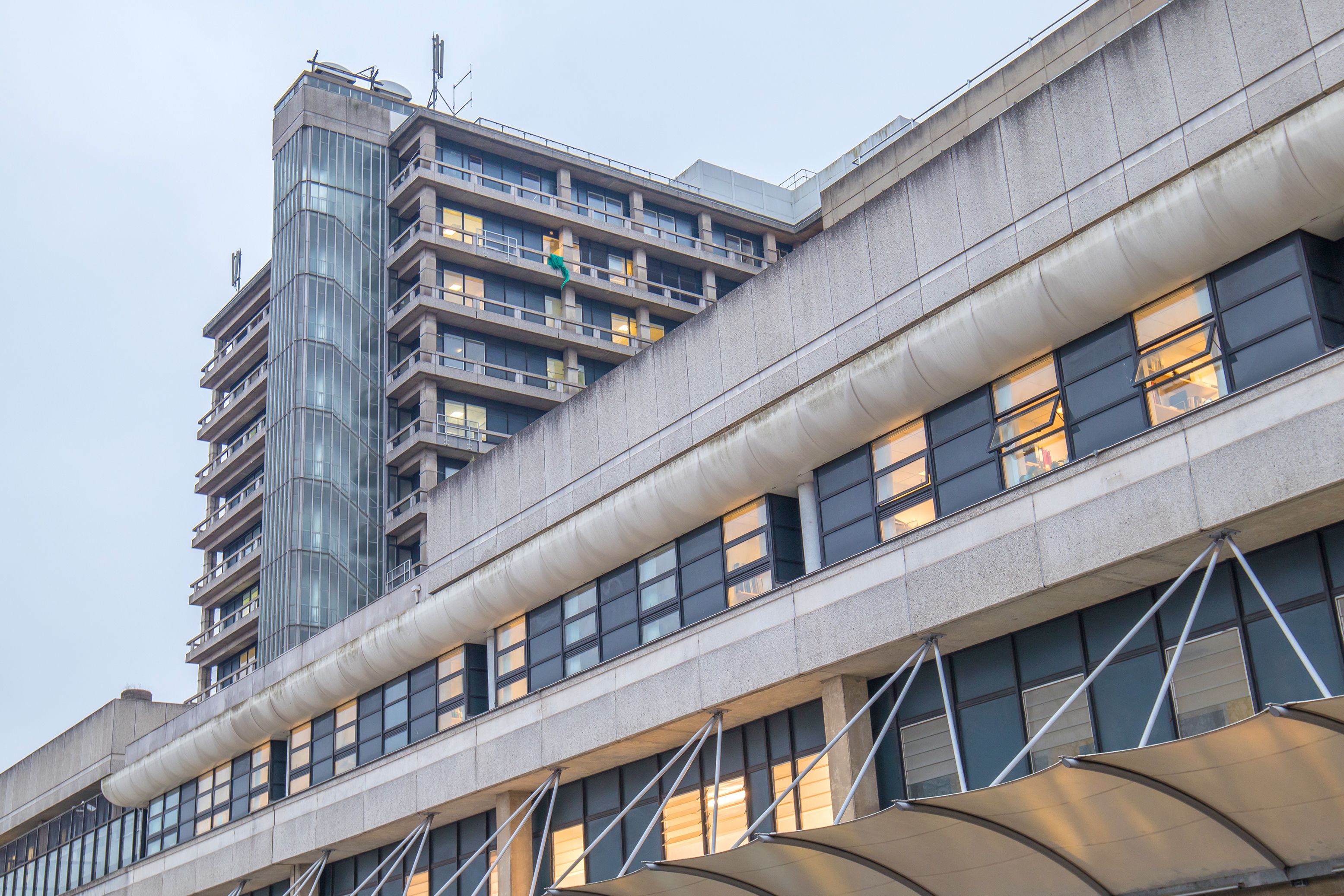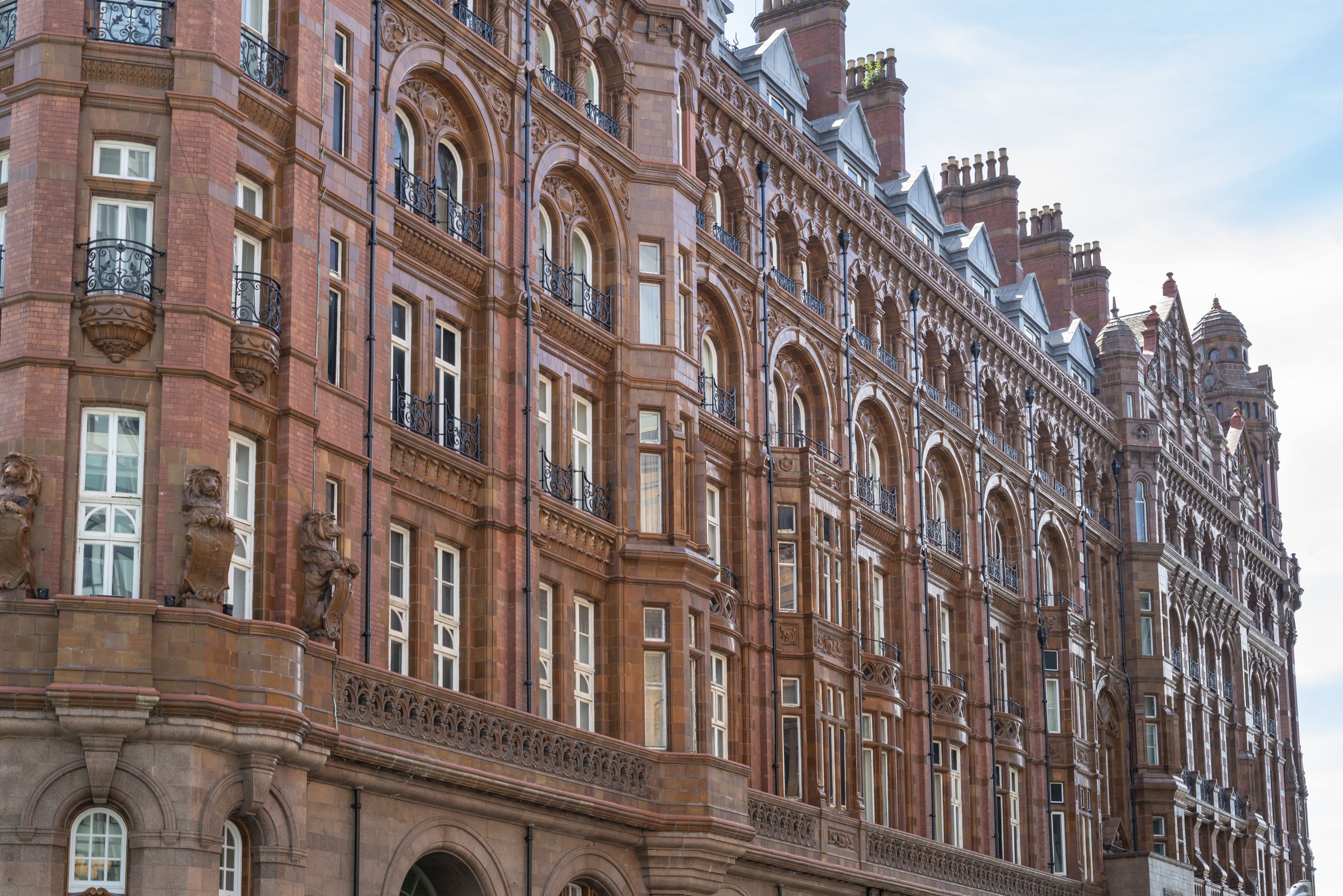A retrofitting revolution
Laying the foundations for buildings to stay cool in extreme heat

Impact at a glance:
- Measured excessively hot summer conditions in UK hospitals from 2007–19 and developed proposals to boost resilience in hot summers.
- Adaptation solutions were designed for 248 National Health Service (NHS) England Acute Hospitals (12.4 million m2).
- Methodology was extended to China, covering 9 billion m2 of building stock with a population of 550 million people.
- Developed the NHS Energy Efficiency Fund (EEF) to mitigate climate change effects by improving energy efficiency across the NHS estate.
- Redrafted the primary NHS guidance on energy efficiency, promoting EEF findings and advocating refurbishment as often the superior option to newbuild.
“We’re paying you to think the unthinkable.” It was 2008 and Alan Short, Professor of Architecture at the University of Cambridge was meeting with the Director of Estates and Facilities of the Department of Health.
“I’d been tasked with designing a hospital that could self-regulate its temperature,” recalls Short.
“On the whole, architecture practices tend to steer clear of hospitals as they’re thought to be incredibly complex and technically demanding. Innovation is dangerous because you’re risking people’s lives.”

But the reality was that lives were already at risk. “Sadly, mortality increases with hot weather both at home and in hospitals – the very elderly and very young patients with compromised health are particularly vulnerable,” says Short. “One of the biggest problems of climate change is infrastructure like hospitals haven’t been built to cope with the temperatures we are experiencing. This tragedy of in-hospital deaths from heat will only increase if preventative measures are not put in place.”
Fundamentally different thinking

“The architectural fashion for the last 70 years or so has been to make very lightweight glassy buildings,” explains Short. “They are the worst possible kind of building for a warming climate.”
Conventional air conditioning which, explains Short, “eats about three times as much energy as heating,” perpetuates the very problem our warming world is up against. The answer he says is to “think about configuring buildings in a fundamentally different way.”
Professor Alan Short (Trinity 1974), President of Clare Hall, Cambridge
Professor Alan Short (Trinity 1974), President of Clare Hall, Cambridge
Short has been interested in environmental architecture since he was a student and went on to design a number of self-regulating buildings, including the University Library in Coventry. “The building was completely naturally ventilated and cooled. The design was very simple but worked a real treat. It was fantastically successful at temperature regulation.”
“The chief architect of the Department of Health phoned me up and asked: “Could you make a hospital like that?” I said, “I don’t see why not.””
Short drew up designs for a self-regulating hospital and went on to be appointed, along with collaborators at Loughborough University, the Open University and the Cambridge Engineering Design Centre (EDC), to assess the NHS’s vast estate and make recommendations to increase its resilience to the changing climate, reduce carbon emissions and improve comfort.
The research project was known as the Design and Delivery of Robust Hospital Environments in a Changing Climate (DeDeRHECC) and would span more than a decade – running from 2007 to 2019 – resulting in a set of proposals to boost resilience in hot summers.
“A maverick approach”

Designing self-regulating buildings is at the heart of architectural philosophy, explains Short. “My method is to go back in history – it’s a maverick approach."
"I’m particularly interested in how large buildings kept themselves comfortable before air conditioning was invented. In Europe this was broadly from the 1880s until the Second World War. In America, it was until the 1930s.
“You’ll find a spectacular treasure trove of buildings – designed with very sophisticated levels of understanding about how to keep people comfortable while using very little energy. They did this by manipulating the form of the building – for example the materials and geometry – to provide ventilation by moving about huge amounts of air allowing passive cooling.
“We are shamelessly borrowing from their techniques,” says Short.
But whilst Short’s designs for self-regulating buildings were inspired by those of the 19th and early 20th centuries, the analysis is firmly rooted in the technological revolution of the 21st century. To do this, they worked with collaborators at Imperial College London who adapted software originally designed to assess ocean currents to investigate how air flowed around the hospital buildings.
‘Robust Hospitals in a Changing Climate’
Short and colleagues used these simulations – built using data from two years of observational studies – to design a series of interventions that could be retrofitted to hospital buildings to promote self-regulation. Interventions were tailored to the five fundamental types of buildings identified by the Department of Health as being part of their infrastructure estate.
Interventions included effective external shading for windows which still admitted good daylight and the provision of user-controlled advanced stack and cross ventilation, which provided the potential for vigorous air-change. Adaptation solutions were designed for all five fundamental hospital types enabling an assessment of 248 National Health Service (NHS) England Acute Hospitals equivalent to 12.4 million m2.
This set of recommendations informed the NHS Energy Efficiency Fund (EEF) and Short was later asked to redraft the primary NHS guidance on energy efficiency known as the Health Technical Memorandum (HTM 07-02), which is the required point of reference for approvals of all NHS Estates and Facilities projects.

“The (Energy Efficiency) Fund enabled the NHS to go further, faster in mitigating the effects of climate change, by improving energy efficiency, whilst retaining the resulting benefits within the NHS organisations for re-investment directly into frontline patient services. The lessons learnt from these energy efficiency projects are embedded in Encode 2015 as best practice guidance.”
Former Head of Profession for NHS Estates & Facilities Policy
“I just would like to pass on my gratitude and thanks, this is a real source of best practice and knowledge sharing.”
Department of Health Chief Architect
China’s hot summer cities

Across the globe, Short’s work was being keenly followed by his colleagues at the Universities of Chongqing and Zhejiang. The Universities themselves were situated in what’s known as the Hot Summer-Cold Winter (HSCW) zone in China.
The HSCW region is home to 550 million people and contains 9 billion m2 of building stock. As the name suggests, the summers are hot and humid and the winters cold. “Astronomical numbers of air-conditioning units get sold,” says Short “as the standard of living increases, people are less satisfied with their internal environments.”
Short took the principles that he’d been working through in the temperate climate of the UK and started to apply these to the climate of southern China.

Residential district, Chongqing, China. Credit: DuKai photographer / Moment via Getty Images
Residential district, Chongqing, China. Credit: DuKai photographer / Moment via Getty Images
The centres of Chongqing and Hangzhou were surveyed by scores of graduate students and their professors who identified recurrent building types. Internal and external data were collected over two summers. The information was then used to model the cities and test the impact of retrofitted adaptations. In addition to passive schemes, wind-driven ventilation was also added to further reduce the summer temperatures.
The project, called Low carbon climate-responsive Heating and Cooling of Cities (LoHCool), estimated that the total annual energy consumption for residential floorspace in the HSCW zone was 90-135 billion kWh. Their proposals would mitigate a potential future 320.11- 415.8 billion kWh of energy consumption per annum – for context the approximate UK total in 2020 for the industrial sector was estimated as 232 billion kWh, with all sectors totalling 1,395 billion kWh.

The findings of LoHCool were presented to leading building contractors and real estate developers through workshops. A film detailing the work, A Low Carbon Future for China’s Furnace Cities by Monika Koeck of Cinetecture, went on to win a number of awards.
'A Low Carbon Future for China’s Furnace Cities'
“This research project has important implications to developing lower energy residential buildings in this area within which we are able to play an active part. Our company has reviewed its benefit to the existing building stock and the research has greatly broadened the range of approaches which we can consider when we plan for new construction, we can see greater value to be recovered in our existing building stock as a consequence in the region of Hot Summer and Cold Winter.”
Hangzhou Sanxiang Impression Co. Ltd
“The research and our interactions with Professor C. Alan Short have had important impact on designing lower energy buildings in this region. The research has broadened the range of methods which we can consider when we plan for refurbishment or new construction.”
Zhejiang Huazhi Technology Promotion Centre
"The Climate Risk and Resilience Lead at Fraser Health and her Energy and Environmental sustainability (EES) colleagues subsequently translated Short’s principles and methodologies to a British Columbia context, developed projects with national-level partners, and shared results and insights with communities of practice."
Director of Energy and Environmental Sustainability, Fraser Health
Next generation

“I think it is quite feasible for the swingeing global carbon reduction targets for the built environment to be met, and by judicious design in conventional materials, to reduce demand,” says Short.
However, change is coming far too slowly in what Short describes as a “conservative industry” that is showing “little sign of a radically new responsive low-carbon architecture 22 years into the new century.”
While Short is disappointed by the sector’s reluctance to adapt to the needs of a warming world he says he’s “very optimistic about the next generation of architects and engineers, not least those I have had the privilege to teach and examine in Cambridge.”
Published 6 October 2022
With thanks to:
Professor Alan Short
Words:
Charis Goodyear
Infographics:
Alison Fair
The text in this work is licensed under a Creative Commons Attribution 4.0 International License


